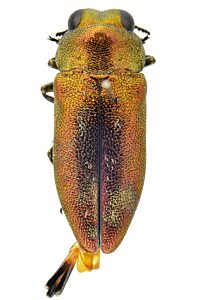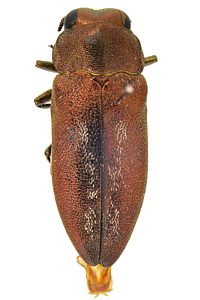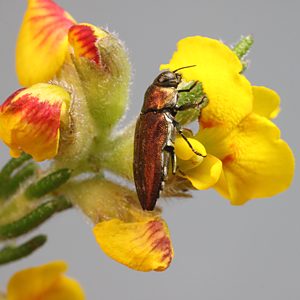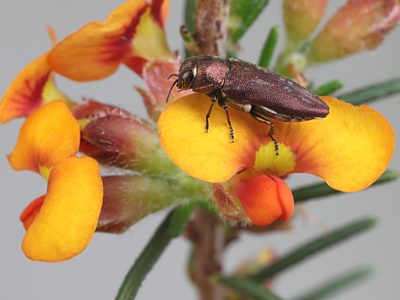Barker 2001 provided evidence of long-term decline in this species and suggested habitat destruction as a cause. He cited the protologue (Hope 1946a, p.219): 'The above species was captured at Moriatta [=Morialta], where it was taken in great abundance' then commented that 'in thirty eight years of collecting in South Australia I have captured one specimen'. Although a number of new records have been made in recent years, D. roseocuprea does appear to have disappeared at Morialta and in the wider Adelaide foothills area.
Adults of this species are strongly associated with the flowers of native peas. This is an atypical adult association for the genus and is shared with only a few other species such as Diphucrania acuducta, Ethonion and some Melobasis species. Such species also use native peas exclusively as larval hosts, and this is likely to be the case with D. roseocuprea also, although no breeding records have been found to date.
| ¹ Legend | regions | SA State Herbarium regions (map)
EA: Eastern, EP: Eyre Peninsula, FR: Flinders Ranges, GT: Gairdner-Torrens, KI: Kangaroo Island, LE: Lake Eyre, MU: Murray, NL: Northern Lofty, NU: Nullarbor, NW: North-Western, SE: South-Eastern, SL: Southern Lofty, YP: Yorke Peninsula |
| size | The ellipse is the correct size when printed, indicative on a desktop screen, and likely to be wrong on a mobile device. |



































